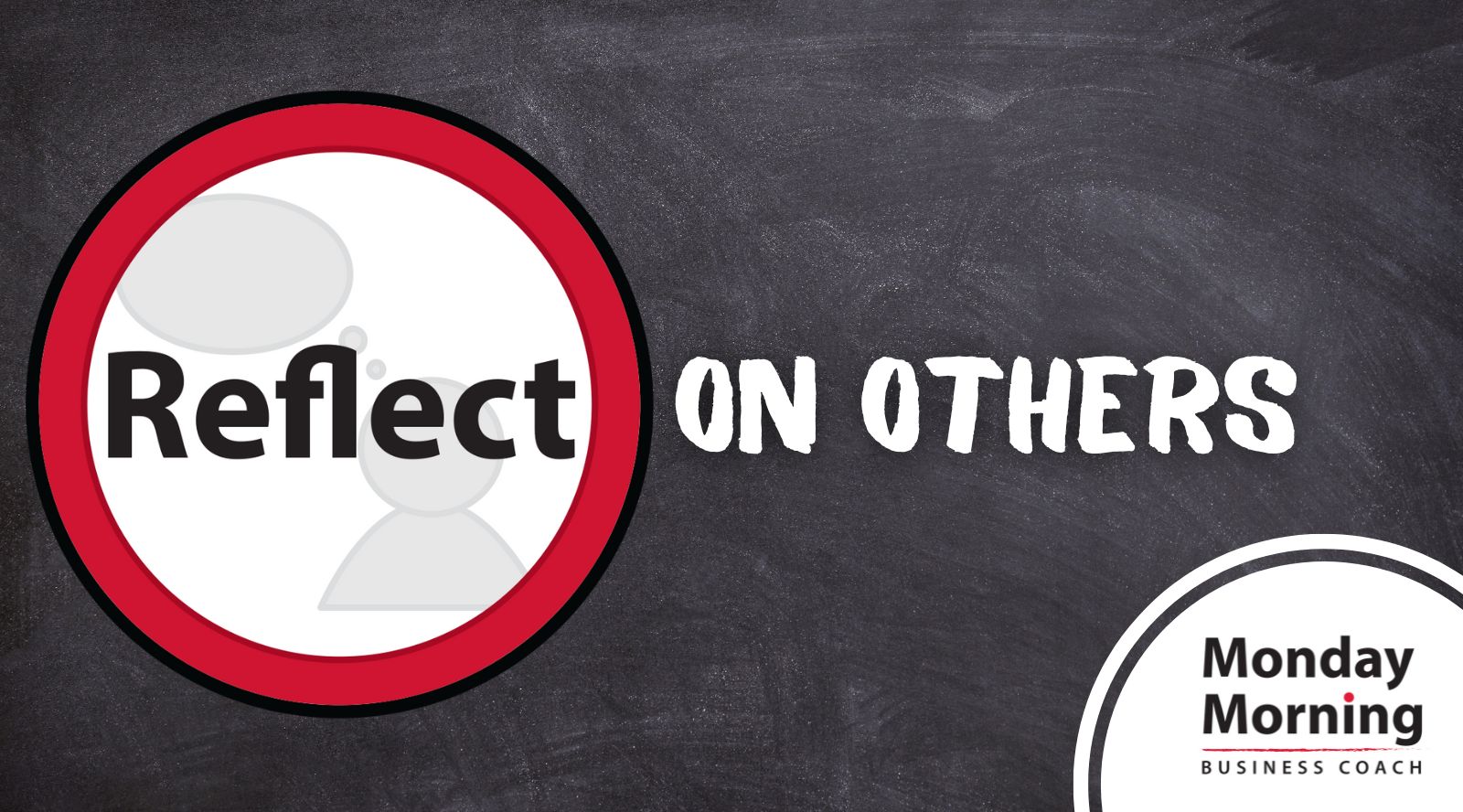Last week, in Reflect on SELF, we talked about the second step in our Leader in You® framework: REFLECT.
In that post, we suggested some questions to help you understand what’s going inside of you so that you can move forward at your best. Doing this can help to support you in managing your stress and emotional agility, which in turn, supports the creation of psychological safety with your teams.
This week, we’re providing you with similar questions to help you guess at what might be going in with others when they’re getting reactive.
Reflecting on others helps you to
build empathy for their experience,
and consider possibilities for both of you
to move forward successfully.
REFLECT on OTHERS
There are four questions we encourage you to ask yourself.
What are they afraid of in this situation?
In some cases, you may actually know the answer to this question and in other cases, you’ll be guessing. Guessing is good. Guessing suggests you care enough to understand what may be going on others.
Try to think about the person and what you know about them. What would they most likely be afraid of in this situation? What would be creating a sense of fear or threat in their brains?
Many things, big and small, can create fear, and fear never brings out the best in people. So, as a leader, you want to try to understand the fear and try to decrease it. Some common examples we’ve seen are:
- Newly promoted leaders worry that they don’t deserve it.
- An executive that was asked by the CFO to cut the budget is stressed that people will be mad.
- Managers under the microscope from their boss to increase revenue can become micromanagers to their team.
What do they typically do when they feel that way?
Again, this may be a guess; but if it’s someone you have known for a while or worked with over time, you have a sense of what they do when stressed and afraid.
Note it. Expect it. It can help you assess when fear is in play.
Some common examples we’ve seen are:
- A leader under communicates.
- A company’s president opts out of difficult meetings.
- A supervisor yells at staff.
What do they do when they feel safe and at their best?
This may be a guess as well, but if you have a history with the person or people, you may have noticed what they’re like when they’re influencing others and allowing themselves to be influenced by others.
If you’re not sure, think about what you believe helps people you know well, feel safe. Think of family and friends. How does their behavior and attitude change when they feel safe?
Some common examples we’ve seen are:
- People can be at their best when they don’t feel like they’re being blamed.
- People can be at their best when they feel like you understand the pressure they have.
- People can be at their best when they get a sense from you that you’re willing to work together to create success.
What can you do to help them feel safe and at their best?
As a leader, you want to consider how you might help people to feel safe so that you can engage in productive conversation with them. A conversation where you both influence each other and are willing to be influenced by each other.
If they feel safe, you’re more likely to get them at their best. Some common examples of helping others feel safe in conversation with you are:
- I know you have quite a bit on your plate and I’m sure your intent wasn’t to be dismissive of me. Can we discuss both of our ideas again and talk about the benefits, concerns, and suggestions of each one? I have no doubt we can come up with a great solution together.
- I appreciate that we’ve always had a good working relationship. Something feels “off” recently and I thought I’d check in with you to see how you’re doing.
- It seems like your new boss is leaning on you quite a bit and I wanted to see how I could be of support.
These are stressful times. Stress takes its toll on all of us and can create a feeling of fear and threat. Fear and threat don’t bring out the best in you, your colleagues, your family, or your world.
When you PAUSE and Reflect on SELF and OTHERS,
you’re more apt to bring your best to the world
and support others in doing so as well.
This is true leadership.
When people feel safe, and trust that they can bring their successes, challenges, and different opinions to the table, without fear of judgement, they’re more motivated, successful, and engaged.
This week, continue to PAUSE and REFLECT as you think about your boss, your peers, your direct reports, your partner or spouse, and your kids. The Leader in You is designed to support you as you lead in your life and your world.
Stay tuned in the upcoming weeks for a deep dive into the third step: ACT with POWER.
Let us know how your pausing and reflecting are going!
If you’d like support
incorporating PAUSING or REFLECTING into your day,
contact us today.

